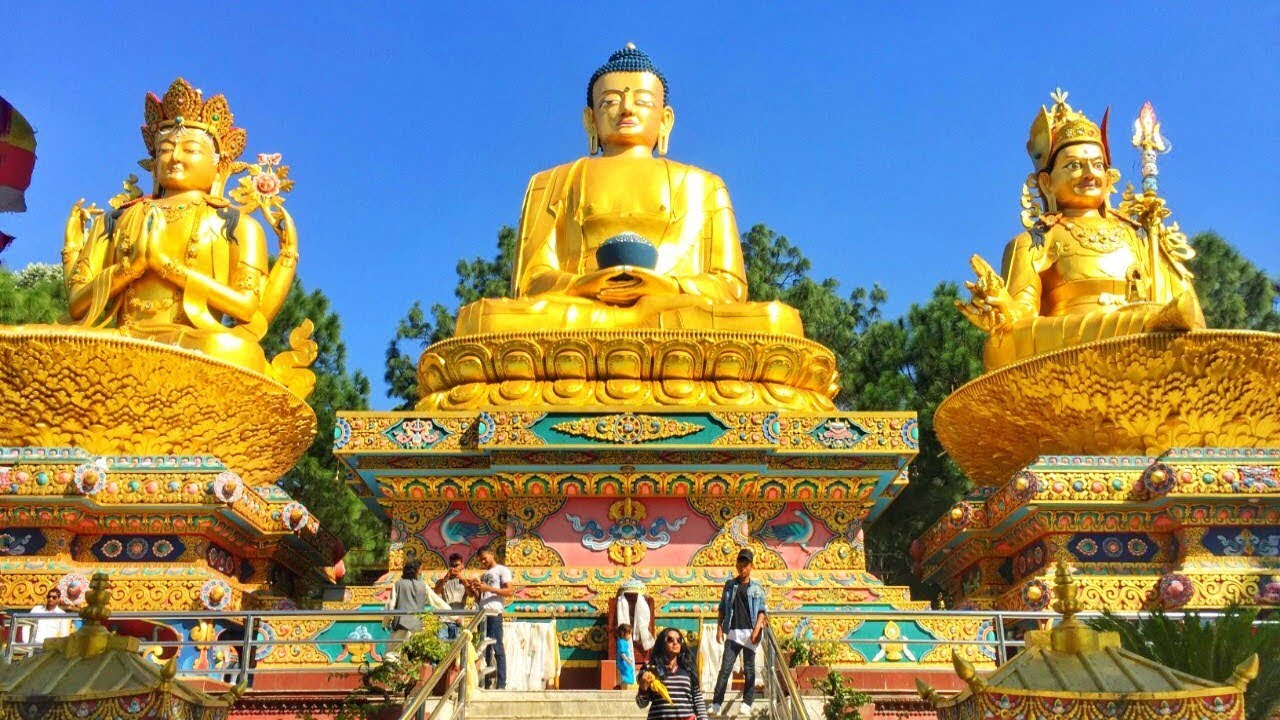SWYOMBHUNATH STUPA
SWYOMBHUNATH
Located on a lovely hillock, Swyambhunath Stupa lies about 4km west of central Kathmandu. There are 360 steps leading all the way to the top commanding a magnificient view of Kathmandu valley and the breath-taking panorama of the snow-clad Himalayan range. The tradition in the stupa follows the Vajrayan form of Buddhist which is a tantric varation of the Mahayand Buddhism (the great vehicle). The stupa mseem to have been constructed during the Licchavi Period. Religious and literally sources give numerous accounts of the establishment and the patronage of the Swyambhunath premises. It is also intresting to note that the stupa wet a series of renovation during the Malla period in the medival times with donations made by merchants, monks, pilgrims and Buddjist followers.
As the ancient legend goes Kathmandu valley was a lake long time ago. Right in the center of this lake was a full blown lotus with the divine light atop. When Maha Manjushri a saint from China heard about this he came all the way from china to the valley. He cut through the southern hill of the valley with his divine sword. The cleft made by the sword immeditadely drained the entire lake water making the valley floor ready for habitation. Hundreds of votive shrienes and other historical monuments built in and other historical monuments built in and around this stupa speak a lot about the significance and antiquity of this famed stupa. The Stupa of swyombhunath stands on a typically stylized lotus mandala base. The hemispherical part of the chaitya is made of brick and stone and on top opf the hemispherical part lies the hermika which carries the eyes of vaorochana watching painted in the Malla period. The stupa is also laden with in all the directions and belived to have the 13gold plated spires which symbolizes the 13 stages to salvation. The spire is croweded by a golden umbrella supported by a pole from within the center. Devotees pour lime down the chaitya to cure illness of family members.
Vajra Dhatu mandala: It lies on the eastern side just after the stairways symboling male power. It is a massive gilt bronze resting on copper mandala. It is the symbolic sword of Manjushree, the Bodhisttava who is belive to have drained the lake of Kathmandu valley before it was ready for human settlement.
Harati Temple: It is two-tiered pagoda temple dedicated to the primal mother- Ajima who is also known as the protective deity of children. Special prayers are offered on satuardays and Tuesdays.
Anantapura and Pratapaura: These two temples located on the south and north respectively are dedicated to Vajrayana deities and were built by King pratap Malla in the 17th century. Anantapura temple was named after his consort and both these temples represent the Shikhara style of architecture.
Panch Buddhas (Five Buddhas): There are also statuses of the Buddhas at the base of the stupa. They are Vaairochana who occupies the center Akshobhya facing the east, Ratna Sambhava facing the west and Amoghsiddhi facing towards the north.
Five Elements of Life: Temples and sacred sites representing the five fundamental elements of nature are said to have been founded by shantikar Acharya. The five elements of life represented in the premise of the Stupa are Vasupura (earth), nagapura (serpents, the lord of water), Shantipura or Akashpura (space or sky), Vayupura (air) and Agnipura (Fire).
Important Days to Visit this Holy Site:
- Buddha Purnima, the birthday of Lord Buddha which falls on the full moon day of Baishakh (April-May). 2. Gunla, the holy Buddhist month according to Newari calendar (Aug- Sept), early morning).
- Kojagrath Purnima (Sept-Oct), Samyak day of Magh (Jan-Feb) once in every twelve years.
- Lhosar.
-
IncludedSWYOMBHUNATH STUPA
TOUR LOCATION






